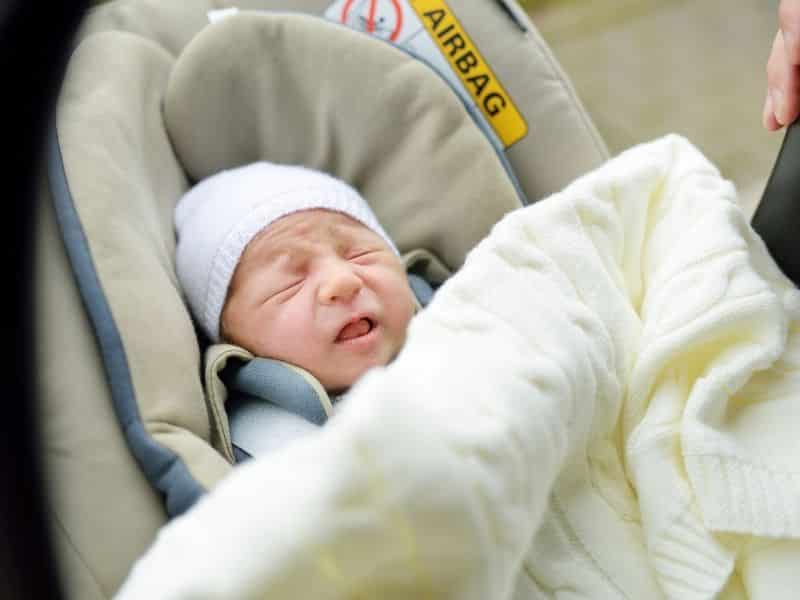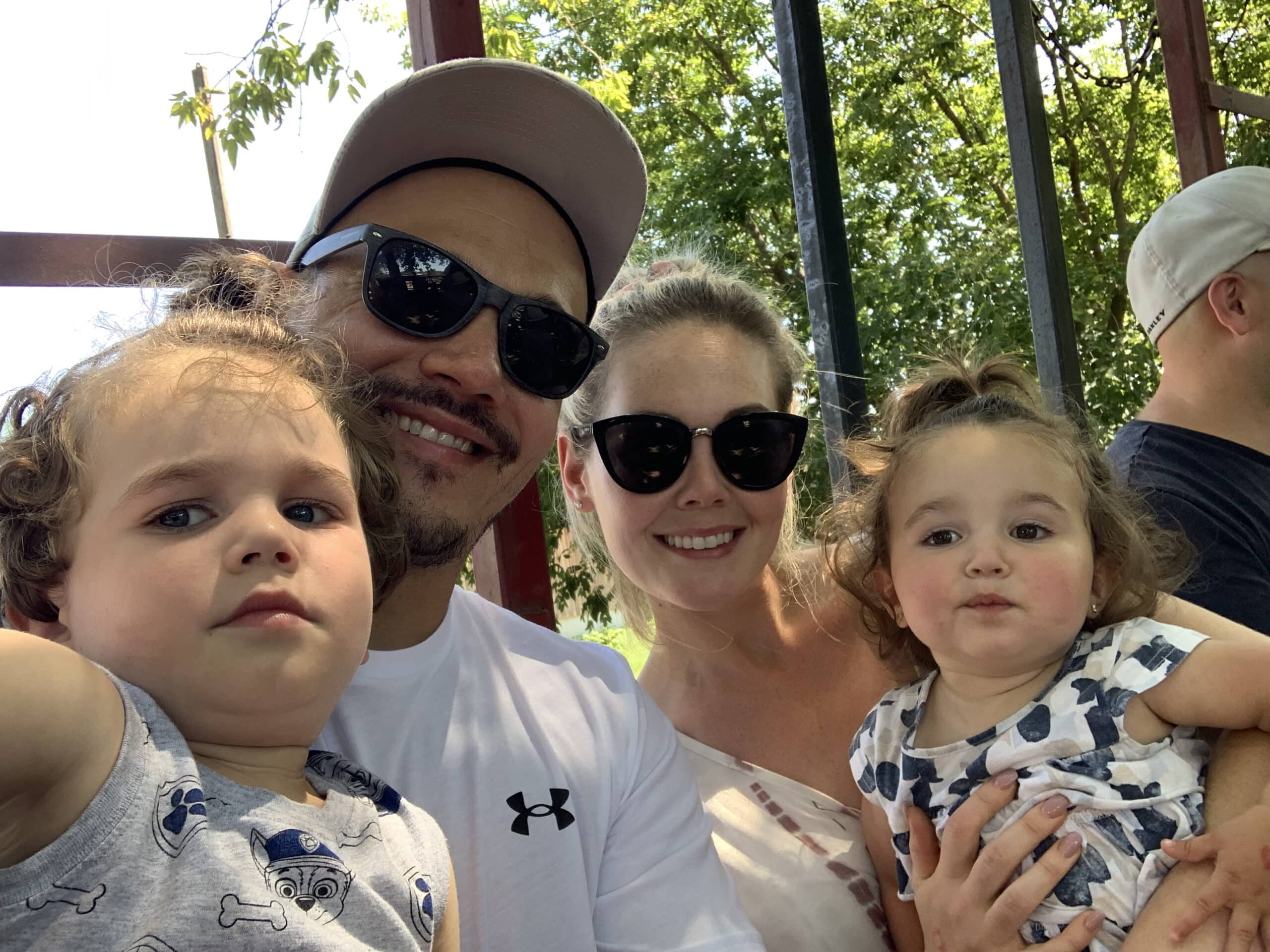If your baby hates the car seat and you have no plan to change that, you’re in for a rough ride. Both metaphorically and literally.
There are very few things more frustrating than trashing and crying in the back seat when you have places to go.

I understand that.
Here’s the problem – reliable information on the topic is rare as a hen’s teeth.
Even when you do find it, it all comes down to commonplace platitudes and cliches.
Today, we change all that.
We’ll seek to understand it and then come up with a plan to change it.
We’ll also address what I believe is THE SINGLE most common cause for the love-hate relationship between your baby and the car seat, and no one is talking about it.
It will all make sense in a hot minute…
Potential reasons behind the baby-hates-car-seat problem
The reasons range from simple (like the seat itself) to complex (like the course of the late pregnancy and the delivery).
The latter is, I believe, the most common cause for the problem, and almost no one mentions it. But first things first.
They hate something about the car seat
This is the most apparent reason, and it’s rarely about comfort per se. Even the budget seats today are comfy and soft.
Look closer for more nuanced reasons – like a tight strap that presses against their bellies or chest.
To check if that’s the case, follow these steps:
- Try starting the vehicle while someone is supervising the baby without a strap.
- If the baby is not crying, close the straps one at a time and look at their reactions
- If they start fussing or crying after you buckle a specific strap, that’s the problematic one
Alternatively, you can always borrow a car seat from a friend and install that one.
If the baby fusses and cries both seats, move on – it’s not about the seat.
Reasons unrelated to specific car seats
Again, we’ll go from the simpler reasons to the more complex ones.
By “simpler,” I mean those you can address by changing something about your car rides.
By “more complex,” I mean reasons that give you very little room for change. These reasons go back to the late stages of pregnancy and the delivery.
Reasons you can address by changing the car ride
I wouldn’t advise trying to figure out which of these reasons be behind the problem.
Who has the time for that?
Instead, understand ALL the potential reasons that you can address and craft a single comprehensive plan.
If it works, you’re not gonna care about the initial reason.
The potential problems you’ll need to address:
- The baby is just bored
- They hate the lonely feel of the back seat
- It’s too cold or too hot in the car
- The motion messes with their tummy after a meal
- They hate feeling restrained
- Pieces of their clothing are bunching
- They had a one-time negative experienced, and it’s stuck with them
- They’ve outgrown the seat ( read more on types of car seats by age)
Reasons that go beyond the car ride
Often, it all comes down to how the baby’s time in the womb (especially the last trimester) and, less often, the way they were delivered.
This is the ‘mysterious’ reason I promised to talk about.
A baby born in a long stressful delivery typically has a stiff upper body and often arches its head backward. That’s also true for babies that have been sitting low in the womb in the latter stages of the pregnancy.
A ‘stiff’ baby that’s arching their head back won’t like the car seat because the arch of the seat because it pushes on their upper back and forces them into an unnatural position.
To put it simply – for these babies, the car seat is the opposite of what’s comfortable.
If your cries of fusses for no apparent reason (unrelated to the car), there’s a high chance that it’s all related to the exact root cause.
Addressing the stiff baby problem
The stiffness of the upper body results from the baby’s muscles being engaged in the womb for weeks or months before they’re born or a stressful delivery.
It’s a kind of a cramp, if you will.

My favorite way to address it is Craniosacral therapy.
Don’t worry; it’s much gentler than it sounds. It’s a wonderful way to address the potential spine misalignment resulting from a low womb position or a stressful delivery.
What is Craniosacral Therapy
It’s basically a gentle medical massage that releases any tension in the cranial bones and the lower back.
If this sounds like I’m describing your baby, do yourself a favor and look into Craniosacral Therapy and cranial osteopathy.
These are game-changer for fussy newborns, and you might see a range of benefits that go beyond the car. It should go without saying that only a certified professional can go anywhere near your baby’s spine.
You can thank me later.
Getting a baby to like the car (again)
Young babies who used to be OK with car rides but suddenly hate the car probably went through an uncomfortable episode and are now associating that feeling with the car.
The most common reason here is an upset tummy. That’s why you should avoid car rides right after meals.
If that’s your scenario, the problem will likely resolve on its own with a few car comfy car rides.
If they always hated the car, you’ll need a more well-thought-out plan to change that.
Here’s a concise checklist to go through to make them love the car again:
1 – Adjust the angles of the seat and the straps
Even if the straps aren’t the reason for their dislike of the car, checking and re-checking them is a good idea because correctly placed straps reduce the chances of injury or death in an accident by a massive 71%.
If you feel it’s the position that might be the problem, think about getting a booster car seat for travel or read more on proper car seat strap placement.
2 – Use soothing music to calm the baby down
If the reason for them suddenly not liking the car is an uncomfortable episode, the solution can be as simple as creating a new, positive association.
If there’s a tune or a lullaby that calms them down in the house, play it on the car radio.
3 – Distract them with car seat toys
There are toys specifically designed to hang from the car seat and be directly in front of the baby in a rear-facing position. They cost next to nothing, and the better units even play music.
The hanging toys crinkle or jingle, and it’s often enough to distract the baby.
Just make sure that they can’t tear anything off and turn the toy into a hazard.
4 – Bring their favorite pacifier into the car
If they’re already taking a pacifier, this is an obvious one, and there’s a good chance you already tried it.
If you didn’t, try it on the next ride.
5 – Burp the child before a car ride
There are few things more uncomfortable for a newborn in a car than excess air in their tummies. There’s a good chance it’s the cause of the problem to begin with.
6 – Make sure it’s not (just) about the seat
You’d be surprised by how often I see this pattern – I receive a question about the baby not liking the car seat only to learn that the most likely cause is a bad seat.
And it’s not the parent’s fault because the modern car seats all look so comfy.
The problem is this – it’s easy to mass-produce a plump plastic shell and stuff it with car seat foam so that it looks comfortable.
7 – Go with a reputable car seat brand
Think back to the last time you went shopping for an armchair or a sofa – I’m sure you’ll remember that piece that looked comfy but turned out to be a dud the moment you sat on it.
Long story short – go with reputable brands that invest in research.
A good illustration of the point I’m trying to make here is Chicco. The Italian company tests its products with actual end-users – the children, in a facility they call the Happiness Laboratory.
8 – Make sure the car seat is the right size
If your baby is atypical in height and weight, make sure you follow the size limits instead of just the age limits of the seat. It’s an obvious tip, but you’d be surprised by how often it happens.
If you feel like you might be getting this wrong, follow these links to read more: how long can a newborn be in a car seat, infant car seats vs. convertible car seats, best car seats for preemies.
Your child and the car seat – the bottom line
There are few things more unnerving in this world than your child crying every time you get in the car.
Too many parents just accept it and try to learn to live with it. You could do that, but it’s a recipe for frustration.

Instead, face the problem head-on and tick off one potential reason at a time. If you have a fussy baby on your hands even outside the car, re-read the section titled “Reasons that go beyond the car ride.”
If there’s one takeaway here, it’s this – you not alone, and it’s not only your child. It’s a common problem.
Educate yourself and make a plan that goes beyond waiting for them to “grow out of it.”
Stay patient and parent on,
Sheryl

Steph is a passionate mom who co-founded Wumblers to share her parenting journey with others. She graduated from Concordia University with a masters degree in Education Technology and worked as an advisor for many years. Steph loves being a mom and wants to have more kids.
Learn more about Steph and Wumblers here.